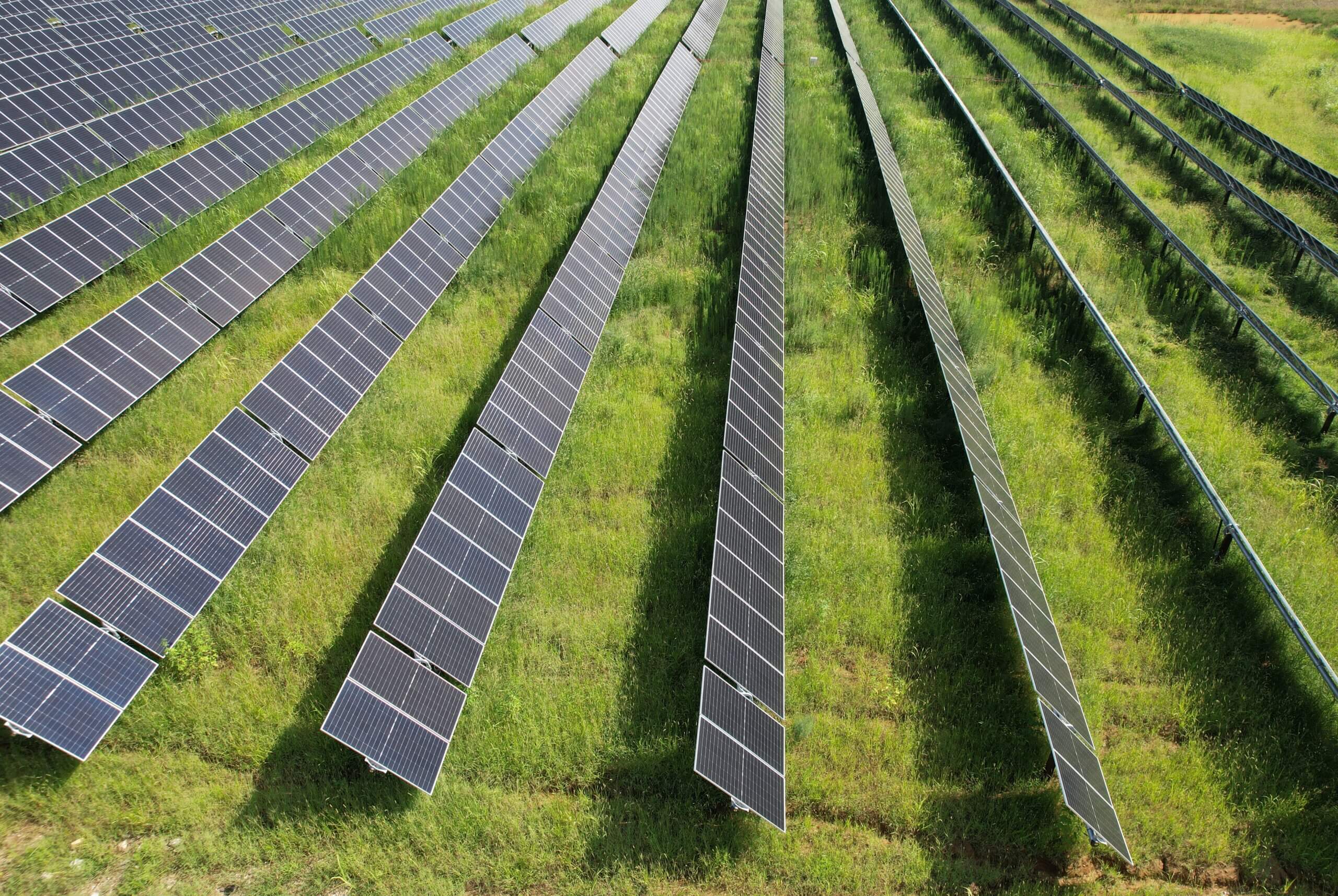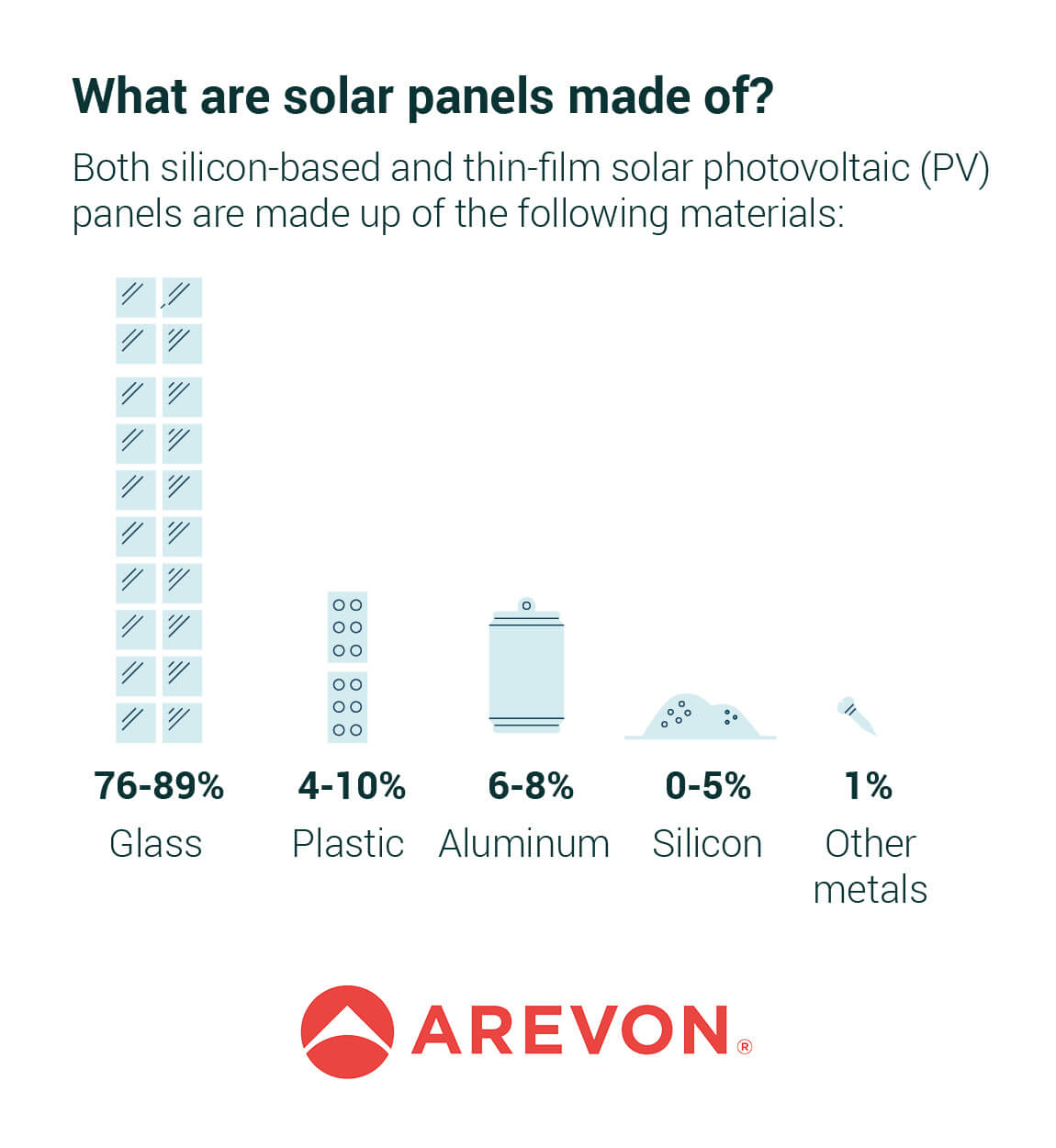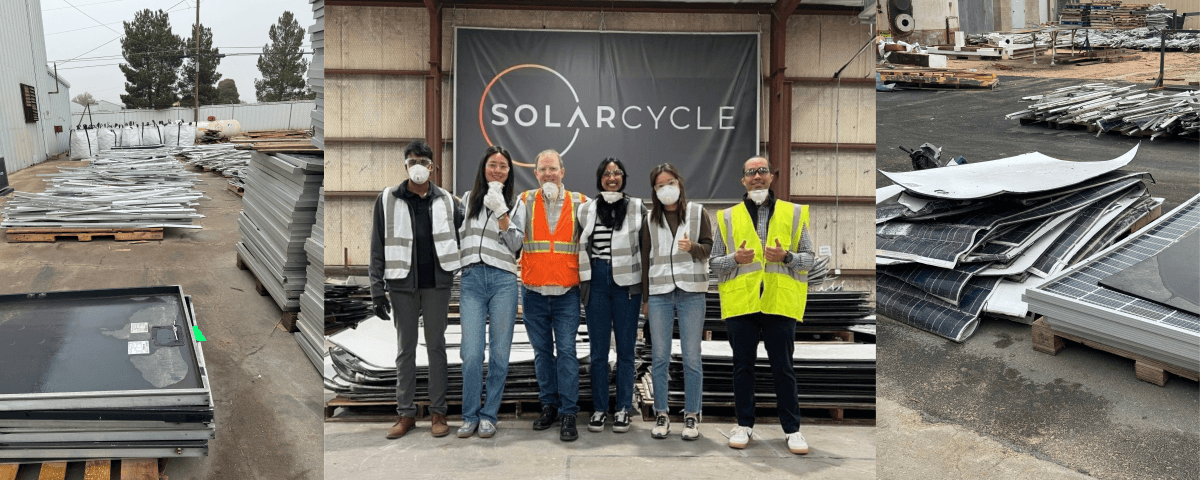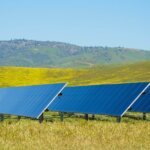November 4, 2025
The Full Lifecycle of Solar: How Arevon Keeps Panels Out of Landfills
Recycling, reuse, and responsible materials recovery are central to our commitment to sustainability.

Sustainability extends beyond energy generation to include the full lifecycle of every Arevon project. We are committed to being a leader in recycling and promoting circularity in the industry. A key question around circularity focuses on solar panels: how much waste will they produce, and can they be recycled?
The reality is encouraging. Solar panels are designed to last for decades, and when their service life ends, they can be responsibly recycled, a process Arevon is helping advance across the country.
A Long Life, Then a Second One
Solar panels are designed to last 30 years or more, generating reliable power for decades. Panels typically don’t suddenly stop working; their efficiency decreases gradually over their lifespan, and many continue to produce power at reduced levels even past the 30-year mark. When a panel stops performing efficiently, it can often be repaired or refurbished to have a second life producing electricity elsewhere.
When a panel finally reaches the end of its service life, more than 80% of its weight is made up of glass and aluminum, two common materials that are easy to recycle. This makes solar energy not only a durable source of American power, but also a responsible one, with Arevon and the solar industry working together to ensure materials are properly managed at the end of their useful life.

Discover more about how solar panels are built, tested, and managed safely throughout their life in our Solar Panel Safety and Environmental Footprint blog.
Arevon’s Commitment to Responsible Recycling
Arevon prioritizes recycling all solar panels from our projects rather than sending them to a landfill. That includes panels that may be damaged during construction or operations, as well as those reaching the end of their service life during decommissioning. The only rare exception is when severe damage prevents effective recycling.
We view end-of-life panels as a resource, not as waste.
In partnership with leading recyclers, Arevon ensures materials are recovered and reprocessed in ways that reduce waste and strengthen domestic supply chains.
Partnering to Build a Circular Future
As a member of the Solar Energy Industries Association (SEIA), Arevon leverages recycling facilities that are part of SEIA’s National PV Recycling Program, founded in 2016. This member-based network ensures that panels are processed at the most environmentally responsible U.S. facilities, all of which strive for maximum material recovery and reuse.
SEIA’s interactive map of recyclers shows program partners located across the country that are capable of recycling solar panels, inverters, and other related equipment today. Participants in the program can repair, refurbish, resell, and recycle, providing end-of-life management services that keep valuable materials in circulation and out of landfills.
SEIA-preferred recyclers meet rigorous standards, including:
- All materials must be collected and processed in the United States.
- Facilities must be accredited and operate sustainably.
- They must strive for maximum material recovery and second-life reuse whenever possible.

Planning Ahead for Responsible Growth
Arevon’s approach to recycling aligns with a larger goal: to deliver American energy that’s both renewable and regenerative. As the industry grows, we’re working with partners to support the expansion and scaling of recycling infrastructure across the United States.
Most solar panels are still in the early years of their expected operational lifetime, with roughly 70% of all solar energy systems installed since 2019, according to the International Energy Agency’s (IEA) Snapshot 2025 report. While that means relatively few solar panels have reached the end of their service life today, that will change in the decades ahead. Now is the time to plan for that future by building the capacity and expertise to recycle and refurbish panels at scale.
As the industry prepares for this future, it’s important to keep perspective. Studies have shown that 35 years of cumulative solar panel waste is dwarfed by other common waste streams, but minimizing what ends up in our nation’s landfills is still essential. Arevon firmly believes that’s part of responsible energy development.
Once the number of panels requiring recycling reaches critical mass, reprocessing facilities can really ramp up capacity, lowering costs, diversifying the supply chain, and strengthening the sustainability of solar materials sourcing. That progress will help secure America’s energy economy for decades to come.
Measuring Progress Across Our Operations
Arevon’s commitment to sustainability is not just a promise, it’s measurable. In 2024, we recycled 11,897 damaged solar panels, diverting 613,546 pounds of waste from landfills.
We also continue to minimize the overall waste footprint of our operations. Across projects and offices, Arevon is committed to reusing or recycling as much material as possible and continuously measuring and improving our impact.
Each year, we publish these results — along with emissions data, recycling progress, and other sustainability metrics — in our Annual Sustainability Report. Explore our 2024 Report.
This is Arevon
Follow us on LinkedIn for more stories of how we’re powering progress.



